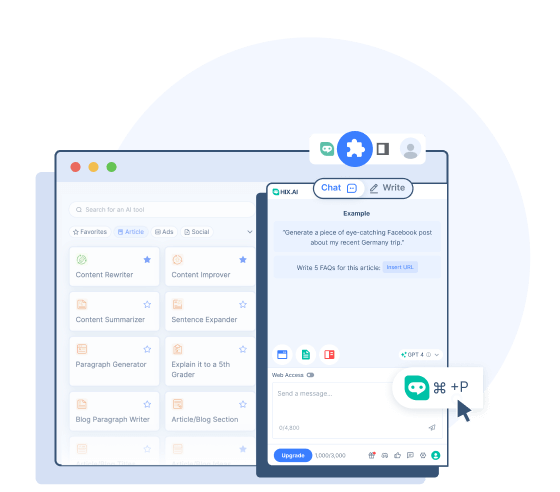Look at your email program, and you'll see the "From" email address (that's you!) and the "To" email address (that's the person you're emailing). You may also see CC and BCC. Do you know what they are and how you use them?
If the answer is no, then this guide is for you!
These two boxes in your email program (CC and BBC) actually play an important role in professional email etiquette. They can help you to keep individuals updated on the progress of projects or secretly informed about the details of sensitive subjects. Learning to use them is going to help you work better and work smarter!
Read on to become a CC and BCC pro. We also answer one of the oldest email questions of all time: What's the difference between CC and BCC?
Efficiently Draft Emails Regardless of CC or BCC Recipients
Whether you need to include CC or BCC recipients in your emails or not, crafting an excellent email remains essential. Use our free email writer to accomplish this task swiftly and effortlessly!
So, what does CC mean in an email?
CC stands for "carbon copy". It's a hangover from the pre-digital age when people used carbon paper (like tracing paper) to take copies of important documents, such as credit card slips.
Anything you write on top of the carbon paper is transferred below, giving you an exact copy.
What has this got to do with email?
Beats us. But the principle is basically the same.
When you CC someone into an email, they receive a copy of an email that isn't directly addressed to them.
One important thing to know is the recipient of the email can see anyone and everyone who has been CCd in on it. This information isn't hidden at all.
Why would I use CC in an email?
CC in an email has received a bad name because some people (we're naming no names!) like to make themselves look big and powerful by copying everyone to emails that aren't relevant to them. Don't be this person.
Instead, use CC in an email intelligently. CC is used to provide information to someone about a message that they have an interest in, but they do not have to act upon.
CC is about providing information, not action.
It's easier to explain this with some examples:
- You may CC your team leader when requesting leave from your director.
- You may CC your boss when emailing an important client.
- You may CC a friend when introducing them to a new contact.
- You may CC a colleague on an important conversation before going on vacation.
- You may CC a whole project team when sending an instruction to one person.
These are just some of the reasons why you might want to CC someone. Before adding their email address to the CC box, ask yourself:
- Is this relevant?
- Will they be interested?
- Am I providing this for information or asking them to act?
- Do I want the recipient of the email to know I've sent this to the person?
If the answer to all four of these points is yes, then you've just decided to CC them in on an email.
HIX Email WriterWrite/Reply to Emails Instantly
Type // to draft emails in no time
Get tailored replies with one click
Quickly summarize a received email
How do I CC someone on an email?
To CC someone on an email, follow this process:
- Open your email program and select a recipient in the "To" box.
- Click the CC button to bring up the box.
- Add the email address (or addresses) to the CC box.
- Write your email and send it.
It really is this simple to CC someone on an email. But before you do, review the basics and check out our expert tips to learn about CC email etiquette.
Read also: How Can I Write a Customer Service Email?
CC email basics
Before we go further, here is a reminder of some CC email basics:
- CC stands for carbon copy.
- To CC someone on an email, there has to be a sender and a recipient.
- You can CC as many people as you want.
- The recipient can see any of the people you have CCd on an email.
- If the recipient replies, they can choose to copy in those who have been CCd or not. This doesn't happen automatically.
Read also: How to start an email? (10 email greetings examples included)
Dos and don'ts of using CC in emails
CC has a bad name in business because people use it thoughtlessly. The result is email inboxes clogged up with unnecessary and irrelevant messages. Here are the dos and don't of using CC in an email.
- Do CC someone if the information is relevant. Don't CC f you're asking someone to act.
- Do use CC sparingly. Don't just CC everyone (they won't like it).
- Do use CC if you're happy for the person to see who you've messaged. Don't use CC if you want to secretly include them.
- Do CC your boss and colleagues. Don't include directors or senior managers unless you're serious.
- Do check you've used CC, not BCC. Don't send emails without checking who you're sending them to and why.
Read also: How to Craft Polite Candidate Rejection Emails
So, what does BCC mean in email?
How are your detective skills? If you've read this far, you'll guess that CC stands for carbon copy, but what about the B?
BCC stands for "Blind Carbon Copy", and the principle is exactly the same as CC, except the recipient can't see who you've copied into the email.
When you BCC someone into an email, the receiver gets the message (as normal), with a copy being secretly delivered to anyone you BCC.
The person who received the email is unaware that it has been BCCd to someone else. There are no signs or signals that this is the case. It's 100% secret.
Because the person who receives the email doesn't know someone has been BCCd, they can't choose to include the person in any reply.
Why would I use BCC in an email?
BCC is used to share emails with someone who you want to have a copy without the other person knowing about it. BCC is a sensitive subject as you're acting secretly, but there are some reasons why it's used in the professional world:
- You may BCC your boss when emailing a problem client.
- You may BCC a colleague when complaining to a manager.
- You may BCC a person when complaining on their behalf.
- You may BCC another of your email accounts when dealing with an issue at work.
- You can BCC another account if you want to keep a copy of your correspondence.
How do I BCC someone in on an email?
The process of using BCC is the same as CC. We'll explain again how to BCC in an email:
- Open your email program and select a recipient in the "To" box.
- Click the BCC button to bring up the box.
- Add the email address (or addresses) to the BCC box.
- Write your email and send it.
BCC email basics
- BCC stands for "Blind carbon copy".
- When you BCC someone, they receive an exact copy of the emails.
- The recipient of the email doesn't know if anyone has been BCCd into an email.
- If the recipient replies, the reply won't be sent to the person who has been BCCd.
- BCC can be seen as being sneaky, but it's not! When used properly, it can help to protect your reputation.
Dos and don'ts of using BCC in emails
Still unsure about how to use BCC in an email? Here are some dos and don't about using BCC in emails:
- Do BCC if you want to secretly share your message. Don't use BCC if you want the recipient to reply.
- Use BCC if you want to keep a record of your emails. Don't use BCC if it will get you in trouble or break the rules (such as sharing confidential emails outside of your employer's network).
- Do check messages before sending and ensure you're using BCC correctly. Don't send messages without checking them every time!
- Do be careful when BCCing your friends. Don't break any rules!
What's the difference between CC and BCC in an email?
The age-old email question, what is the difference between CC and BCC? Can you answer it yet? If not, here are the differences spelled out:
- Carbon copy is used to share a copy of an email with someone, and the recipient can see they have received it. It's for information, not action.
- Blind carbon copy is used to secretly provide a copy of an email to someone without the recipients knowing.
Here's another way to explain it. (This should look like your email program if yours is anything like ours.)
From: This is you
To: The person (or group of people) you're sending an email to
CC: These are people who will receive the email for information.
BCC: These are people who will secretly receive the email.
Conclusion
We know that CC and BCC can be confusing, but – as we hope we've shown you – they're pretty simple concepts to grasp once you get the basics. Now that you understand what they are, it's up to you to use them intelligently. That means not copying everyone into irrelevant emails but using CC and BCC effectively to power productivity.



